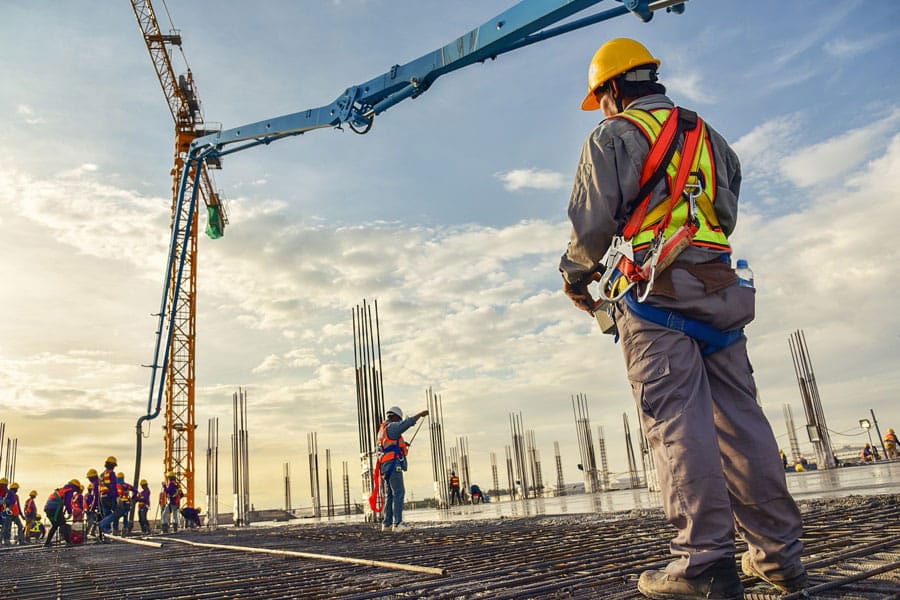Construction organizations around the world have changed their approach to document management and communication. The new generation of collaborative technology, specially designed for the industry and delivering a new level of efficiency and value, has changed the way firms function forever.
The everyday process of sharing information is different with digital tools. Everything from communicating progress from the jobsite to sharing plan documents with subcontractors is now simplified and streamlined, with considerable efficiency benefits.
What makes digital collaboration different?
Before diving into the specific best practices around digital collaboration, it’s worth noting how the technology works and the new capabilities it delivers. Despite the fact that businesses can replace their physical records with digital tools, transitioning to digital is more than just the equivalent of moving physical filing cabinets to a computer.
Key concepts associated with digital collaboration tools include:
No more duplication: One of the significant capabilities of digital collaboration tools is that they allow all stakeholders to work on shared copies of documents. This means less work expended managing multiple copies of files and decreased potential confusion associated with outdated document versions.
Real-time updates: The ability to immediately communicate updates and changes can accomplish more than simplifying file storage and preventing confusion. It also ensures that all teams—whether they’re on the jobsite, in the office or working remotely—have immediate access to the latest information, building efficiency into workflows.
Support for specialized documents: The documents needed on a construction job go beyond the standard types used in general industry. Building information modeling (BIM) files, including marked-up 3D plan documents, can form the backbone of effective project collaboration. Software purpose built for the construction industry supports these documents.
With these functional capabilities, users at all levels of construction businesses have the power to improve their experience, provided they put the technology to use.
How do users maximize the power of digital collaboration tools?
Businesses that truly make digital collaboration tools part of their workflows stand to gain in terms of everyday value and process efficiency. This transformation isn’t automatic, however. Leaders in these construction organizations need to understand how to get the most out of their new technology tools.
The following are a few of the practices construction businesses can turn to once they’ve moved to digital collaboration tools:
Train every user
While today’s top construction collaboration tools are user-friendly, this doesn’t mean employees will understand how to use the features relevant to their specific roles. That’s why training is an important part of the equation.
Not only should organizations train existing users with new software during implementation, but they should also work technology training into their onboarding process. When every employee—new and legacy—understands the software, it’s less likely that people will go around the software and use inefficient document sharing options.
Measure usage and results—and iterate
One advantage of working with digital collaboration is that these tools are constantly producing data. This information can tell supervisors how their team members are getting value from the software and help them determine whether something could be better.
With accurate data in hand, it’s possible to iterate, rolling out new features or training programs to ensure there are efficient workflows in place that really use the collaboration technology. If field crews on the jobsite aren’t using the solution, for instance, it’s worth asking why and working to increase their participation rate.
Welcome everyone into the system, including subcontractors
When the maximum number of stakeholders are using a collaboration solution, that tool is able to live up to its potential. Having every relevant party able to contribute notes and comments on important documents, such as BIM plans, allows companies to embrace fast and smooth workflows for their jobs.
Digital collaboration tools built for the construction industry allow users from outside an organization to easily create accounts and work with relevant information. This is an important consideration in the industry, dependent as it is on subcontractor and third-party provider relationships. With these connections changing from one job to the next, onboarding new sets of users must be a simple process.
Ensure all levels of the business buy in to the new system
To make a collaboration solution into a central, value-adding part of a business’s technology footprint, it’s important for construction leaders to give the deployment their visible support. When executives have clear messaging around the new technology, that helps the solution take hold.
Other essential considerations include encouraging jobsite workers to use the technology. While these employees may have systems of information sharing and record-keeping that go back years, it’s worth breaking those habits and replacing legacy approaches with modern collaboration technology.
What’s the future of digital collaboration in construction?
Deepening use of digital collaboration tools should be a priority for every construction firm. While the industry has historically been slow to change and adopt new technology, it’s never been easier to embrace such tools.
And as technological advances continue in broader society, digital construction tools will only rise in value, as the ways they can be used expands and the efficiency gains they bring make their return on investment invaluable.















